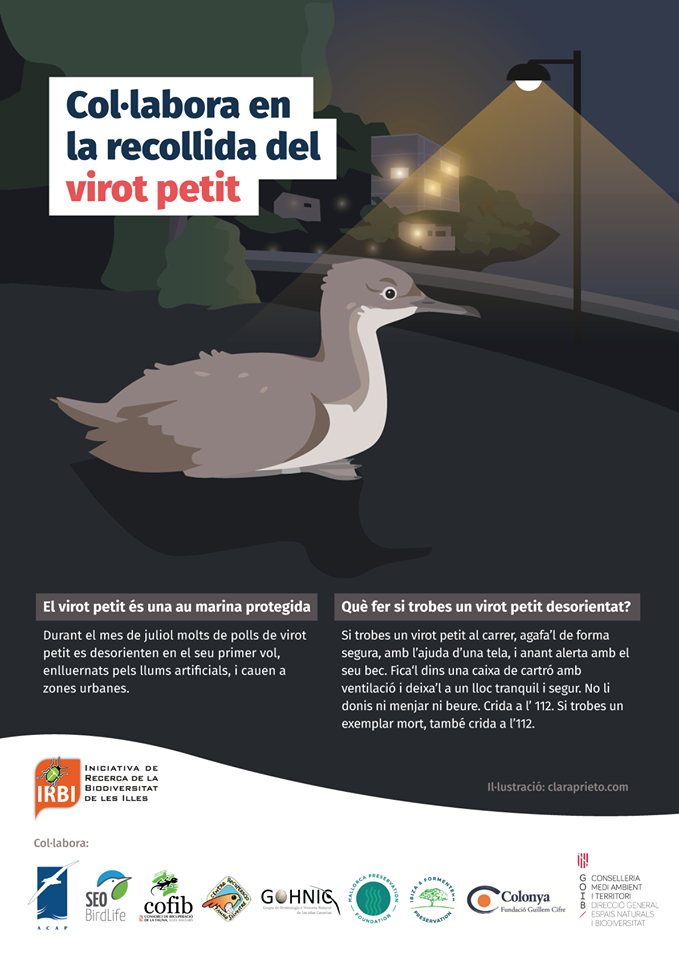La contaminació lumínica de les zones urbanes costaneres de les Illes Balears atrau cada any exemplars joves de virot petit en el seu primer vol cap al mar. Aquests joves poden acabar desorientats en el nuclis urbans, on poden ser atropellats per vehicles o atacats per cans i moixos. IRBI fa una crida a la ciutadania per aconseguir que els joves de virot petit superin amb èxit els seus primers vols i, en cas de que caiguin a zones urbanes enlluernats pels llums, puguin ser rescatats pel Centre de Recuperació de Fauna Silvestre. Aquesta campanya divulgativa s’emmarca dins el projecte “Factors que influeixen en la mortalitat del virot petit per la contaminació lumínica” finançat per Agreement on the Conservation of Albatrosses and Petrels (ACAP), que estudia el grau d’incidència de la contaminació lumínica en les poblacions de l’au marina més amenaçada d’Europa.
Les entitats que col·laboren en el projecte són: la Conselleria de Medi Ambient i Territori, la Fundació Guillem Cifre, el Consorci de Recuperació de la Fauna (COFIB), SEO/BirdLife, GOHNIC, ACAP, Mallorca Preservation Fund i Ibiza Formentera Preservation. Il·lustració i animació: Clara Prieto, Locució: Immaculada Villalonga;, Música: Javier Pérez de Arévalo.
Iniciativa de Recerca de la Biodiversitat de les Illes (IRBI)

Light pollution from the coastal urban areas of the Balearic Islands attracts young Balearic Shearwaters Puffinus mauretanicus every year on their first flight to the sea. The fledglings can end up disorientated in urban areas, where they can be run over by vehicles or attacked by dogs and cats. IRBI calls on citizenship to ensure that the Balearic Shearwater fledglings successfully pass their first flights and, if they fall into urban areas dazzled by lights, they can be rescued by the wildlife recovery centre (Centre de Recuperació de Fauna Silvestre). This informative campaign is part of the project "Factors that influence the mortality of the small population by the light pollution" funded by Agreement on the Conservation of Albatrosses and Petrels (ACAP), which studies the degree of light pollution incidence in populations of the most endangered marine bird in Europe.
The entities that collaborate in the project are: the Ministry of Environment and Territory, the Foundation Guillem Cifre, the Consortium of Wildlife Recovery (COFIB), SEO/BirdLife, GOHNIC, ACAP, Mallorca Preservation Fund and Ibiza Formentera Preservation. Illustration and Animation: Clara Prieto; text: Immaculada Villalonga, music: Javier Pérez de Arévalo.
Iniciativa de Recerca de la Biodiversitat de les Illes (IRBI)
[Google Translate]
Posted 05 July 2020

 English
English  Français
Français  Español
Español